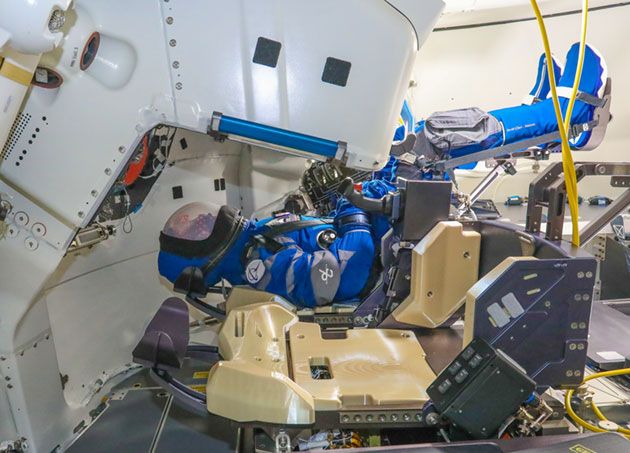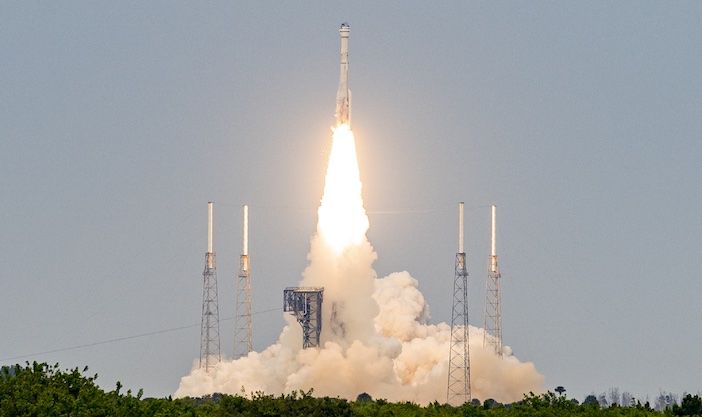Boeing’s CST-100 Starliner spacecraft has successfully launched and performed a planned orbital insertion burn to send it to the International Space Station for its second test flight.
The uncrewed test flight, officially called Orbital Flight Test-2 (OFT-2), is expected to dock with the International Space station after a nearly 24-hour journey in low Earth orbit.
The test flight is carrying cargo and a crash test dummy called Rosie.
Starliner’s first test flight in 2019 did not achieve all of its objectives, leading to a second being scheduled but eventually abandoned last year.
President and CEO of Boeing Defense, Space and Security Ted Colbert said, “Starliner is a symbol of perseverance and pride – designed, built, tested and flown by a team of people who are committed to their mission of safely and reliably transporting astronauts. They will remain laser-focused on the spacecraft and its performance throughout this flight test.”
The reusable Starliner was launched using a United Launch Alliance Atlas V rocket from Space Launch Complex 41 at Cape Canaveral Space Force Station, Florida.
Another previously flown spacecraft is undergoing preparations to carry astronauts to and from the space station for NASA’s Commercial Crew Program. The first crewed Starliner mission is planned to take place before the end of this year.
“We’ve learned a lot about the capability of our spacecraft and the resilience of our team since the first Starliner launch,” said Mark Nappi, vice president and program manager, Boeing Commercial Crew Program. “We still have a lot of operational testing ahead as we prepare to rendezvous with the space station, but we’re ready to demonstrate the system we’ve worked so hard on is capable of carrying astronauts to space.”
The spacecraft is carrying a crash test dummy, or as Boeing calls it an “anthropomorphic test device” named “Rosie the Rocketeer”.
“She is a 180 lbs test device in European tan that is meant to represent the 50th percentile of human dimensions in height and weight,” said Melanie Weber, the subsystem lead for crew and cargo accommodations on the Commercial Crew Program. “Rosie’s first flight provided hundreds of data points about what astronauts will experience during flight, but this time she’ll help maintain Starliner’s center of gravity during ascent, docking, undocking and landing.”
“Even the car you drive must maintain its center of gravity or it could rollover,” Weber said.

For OFT-2, spacecraft data capture ports previously connected to Rosie’s 15 sensors will be used to collect data from sensors placed along the seat pallet, which is the infrastructure that holds all the crew seats in place.
Dan Niedermaier, crew module chief engineer “While Rosie provided us critical insight into how much force her body experienced in the commander seat during the first OFT mission, these new sensors will capture data to characterize the motion of all four crew seats.
“Generally, all seat locations behave similarly. However, there are small differences that our engineers want to validate to ensure everyone gets a nice, enjoyable ride.”
The OFT-2 mission is also carrying more than 800 lbs (362kg) of cargo, including about 500 lbs (226kg) of food and crew preference items for the current Expedition crew members as well as a commemorative US flag.
Related stories
Meet the radiation measuring mannequins on their way to the moon
Starliner spacecraft connected to rocket ahead of first test flight





